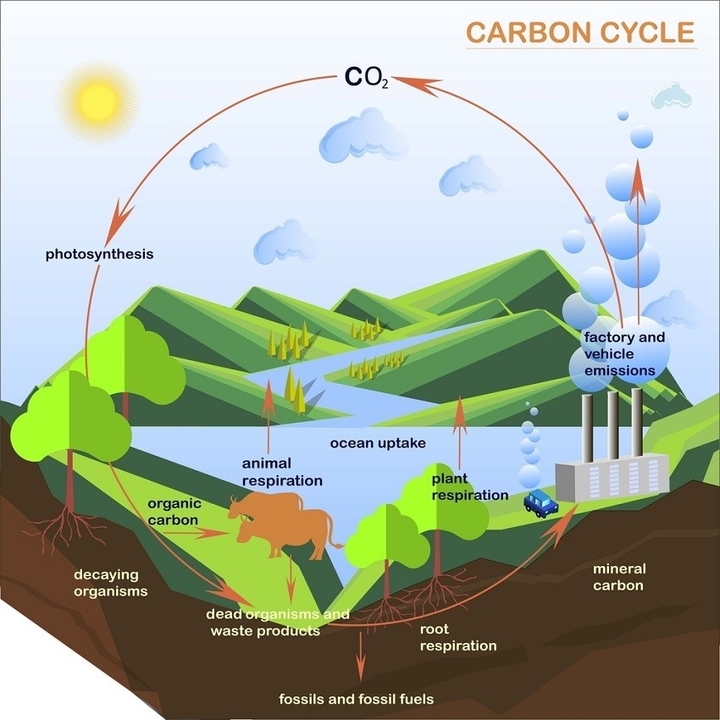- Home/
- Other State Exams (Other State PSC)/
- Article
Carbon Cycle notes in Hindi & English
By BYJU'S Exam Prep
Updated on: September 13th, 2023

Because of growing awareness regarding climate change and its adverse effects on mankind, there are new terms like carbon sequestration, carbon deposit, carbon budgeting etc. which are floating in the market. To understand such complex terms and terminologies, it is important to go through the life cycle of carbon. here in the article, we have discussed the carbon cycle in detail which is important for different exams like UPSC, State PCS and other competitive exams.
Table of content
Carbon cycle
The carbon cycle is a biogeochemical cycle where the carbon and its compounds are continuously exchanged between the three spheres of earth, i.e. hydrosphere, lithosphere and atmosphere (collectively called as biosphere).

Major carbon sinks of our Earth
- In the form of organic molecules in living and dead organisms in the biosphere.
- As the gaseous carbon dioxide in the atmosphere.
- As organic matter in soils.
- As fossil fuels and sedimentary deposits like limestone, dolomite and chalk etc.
- As dissolved atmospheric carbon dioxide in the oceans and as calcium carbonate shells in marine organisms.
Processes involved in the Carbon Cycle
- Photosynthesis: Ecosystem gains most of their carbon dioxide from the atmosphere. Most of the autotrophs have a mechanism that allows for absorption of this gas into their cells. With the help of water and energy from solar radiation, these organisms use photosynthesis to chemically convert the carbon dioxide to sugar molecules.
- Respiration: Carbon released from the ecosystem as carbon dioxide gas by the process of respiration. It involves the breakdown of the carbon-based organic molecule into carbon dioxide and some other by-product in both plants and animals.
- Detritus food chain contains a number of organisms whose primary role is to decompose organic matter. Partially decomposed organic matter becomes part of the soil carbon storage pool.
- Ultimately organic material in the soil becomes part of soil constituents, water and carbon dioxide which return to the atmosphere. This flow accounts for most of the carbon from the atmosphere but not all.
- Diffusion: Carbon dioxide enters into the water by this method. Once it is dissolved in water it can remain as it is or can convert into carbonate or bicarbonate. When carbon dioxide enters the ocean, carbonic acid is formed.
- Certain organisms fix bicarbonate with calcium to form calcium carbonate. This is used to make hardbodies such as shells and corals. When such organisms die their remains accumulate as carbonate-rich deposits to the ocean floor.
Note– ocean deposits are the biggest sink of carbon on the planet.
- In the lithosphere, carbon is stored as both organic and inorganic forms. Inorganic forms include fossil fuels, coal, natural gas, oil shale and sedimentary deposits like limestone. Organic deposits are organic matter, humus etc. some carbon dioxide released from volcanoes.


